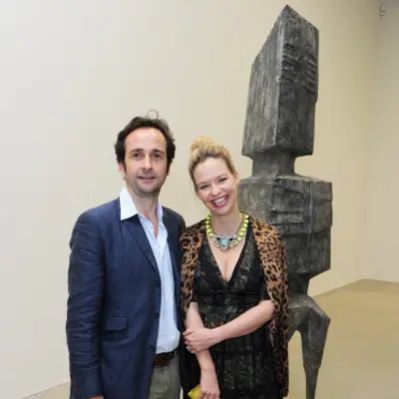What Is Edwin Catmull’s Net Worth?
Edwin Catmull, a prominent figure in computer science and animation, possesses a net worth of approximately $40 million. This estimation is based on his long and successful career at Pixar Animation Studios and Walt Disney Animation Studios, as well as his contributions to the field of computer graphics. Although precise details of his asset allocation are not publicly available, his net worth is primarily derived from his executive positions, stock options, and intellectual property related to computer graphics technologies.
Edwin Catmull’s Career at Pixar and Disney
Edwin Catmull’s career is marked by significant achievements and innovations that have revolutionized the animation industry. After obtaining his Ph.D. in Computer Science from the University of Utah, where he pioneered advancements in computer graphics, including the Catmull-Rom spline and Catmull-Clark subdivision surface, Catmull joined Lucasfilm in 1979. At Lucasfilm, he co-founded the Computer Graphics Division, which later became Pixar Animation Studios. His technical expertise and leadership were instrumental in developing groundbreaking animation techniques and software.
As president of Pixar Animation Studios, Catmull oversaw the production of numerous critically acclaimed and commercially successful animated films. From 1986 to 2018, Pixar released 20 feature films, beginning with the box office blockbuster Toy Story. The success of these films has generated billions of dollars in revenue, solidifying Pixar’s reputation as a leader in animation.
Notable films that he received credit on include: Bolt, Up, The Princess and the Frog, Brave, Wreck-It Ralph, Monsters University, Frozen, Big Hero 6, Inside Out, and Zootropolis.
Following Disney’s acquisition of Pixar in 2006, Catmull also assumed the role of president of Walt Disney Animation Studios. His leadership at Disney Animation led to a resurgence of the studio, with films like “Tangled” (2010), which grossed over $592 million worldwide, and “Frozen” (2013), which exceeded $1.2 billion in global box office revenue. Catmull’s dual roles allowed him to influence the creative direction and technological advancements of both studios, further cementing his legacy in the animation industry.
While his specific salary figures as president of Pixar and Disney Animation are not publicly disclosed, executive compensation packages at major studios typically include a base salary, performance-based bonuses, stock options, and other benefits. Given the financial success of Pixar and Disney Animation under his leadership, it is reasonable to assume that Catmull received substantial compensation throughout his tenure.
Awards and Recognition
Edwin Catmull’s contributions to computer graphics and animation have been recognized with numerous prestigious awards and accolades. He has received five Academy Awards, including the Gordon E. Sawyer Award in 1993 for his technical contributions to the field of computer graphics. In 1996, he received an Academy Award for his work on the Marionette 3-D animation system. In 2001, he earned another Academy Award for his contribution to the development of the RenderMan rendering software, which has been widely used in the film industry for creating realistic and visually stunning computer-generated imagery.
In addition to his Academy Awards, Catmull has received several other honors, including the ACM SIGGRAPH Steven A. Coons Award in 1995, which recognizes individuals who have made significant contributions to the field of computer graphics. He was also inducted into the National Academy of Engineering in 2005 for his pioneering work in computer graphics and animation. These awards reflect the significant impact of Catmull’s work on the animation industry and his lasting legacy as a visionary leader and innovator. While these awards do not directly contribute to his net worth, they enhance his reputation and influence within the industry, which can indirectly impact his earning potential and investment opportunities.
Personal Investments and Assets
Details regarding Edwin Catmull’s personal investments and assets are not publicly available. However, it can be inferred that he has likely made investments in various sectors, including technology, real estate, and other ventures. Given his background in computer science and his leadership roles in the animation industry, it is reasonable to assume that he has a keen understanding of emerging technologies and market trends. Therefore, his investment portfolio may include holdings in companies involved in computer graphics, animation, software development, and related fields.
While specific real estate holdings are not known, it is common for high-net-worth individuals to own properties in desirable locations. These properties may include primary residences, vacation homes, and investment properties. The value of these real estate assets can contribute significantly to an individual’s overall net worth. However, without specific information, it is impossible to determine the extent of Catmull’s real estate holdings.
Similarly, information about Catmull’s ownership of private aircraft or luxury vehicles is not publicly available. Such assets are often considered status symbols and can represent a significant portion of an individual’s wealth. However, without concrete evidence, it is not possible to confirm whether Catmull owns these types of assets.
It’s important to note that information about personal investments and assets is often private and not disclosed to the public. Therefore, the absence of publicly available information does not necessarily mean that Catmull does not have such investments or assets. It simply means that the details are not readily accessible.
Early Life and Education
Edwin Earl Catmull was born in Parkersburg, West Virginia, in March 1945. His early interest in animation and computer graphics laid the foundation for his future career. While specific details about his childhood and upbringing are limited, his passion for animation led him to pursue higher education in technical fields.
Catmull attended the University of Utah, where he earned a B.S. in Physics and Computer Science. He furthered his education by obtaining a Ph.D. in Computer Science from the same institution. His doctoral research focused on computer graphics, and he made significant contributions to the field, including the development of the Catmull-Rom spline and the Catmull-Clark subdivision surface. These innovations have had a lasting impact on computer-aided design and animation.
While the specific cost of his education at the University of Utah is not publicly available, tuition fees for doctoral programs in computer science typically range from $10,000 to $30,000 per year, depending on the institution and funding opportunities. Catmull’s investment in his education proved to be invaluable, as it provided him with the technical skills and knowledge necessary to excel in his career and make significant contributions to the field of computer graphics and animation. Catmull’s net worth, estimated at $40 million, did not exist when he began attending college and perusing his early academic endevours.
Philanthropic Activities
Information about Edwin Catmull’s philanthropic activities is limited. While he has not been widely recognized for large-scale charitable donations or foundations, it is possible that he has made contributions to various causes and organizations privately. Many high-net-worth individuals choose to support philanthropic endeavors without seeking public recognition. Without specific details, it is difficult to assess the extent of Catmull’s charitable giving.
It is worth noting that many individuals in the entertainment and technology industries are involved in philanthropic activities, supporting causes related to education, arts, and social welfare. Given Catmull’s long and successful career in these fields, it is plausible that he has contributed to such causes, either through monetary donations or through his involvement in charitable organizations.
However, in the absence of publicly available information, it is not possible to quantify the impact of his philanthropic activities on his overall net worth. Philanthropic contributions typically reduce an individual’s taxable income and can have a positive impact on their public image, but they do not directly increase their net worth.
 Net Worth Ranker
Net Worth Ranker




























































